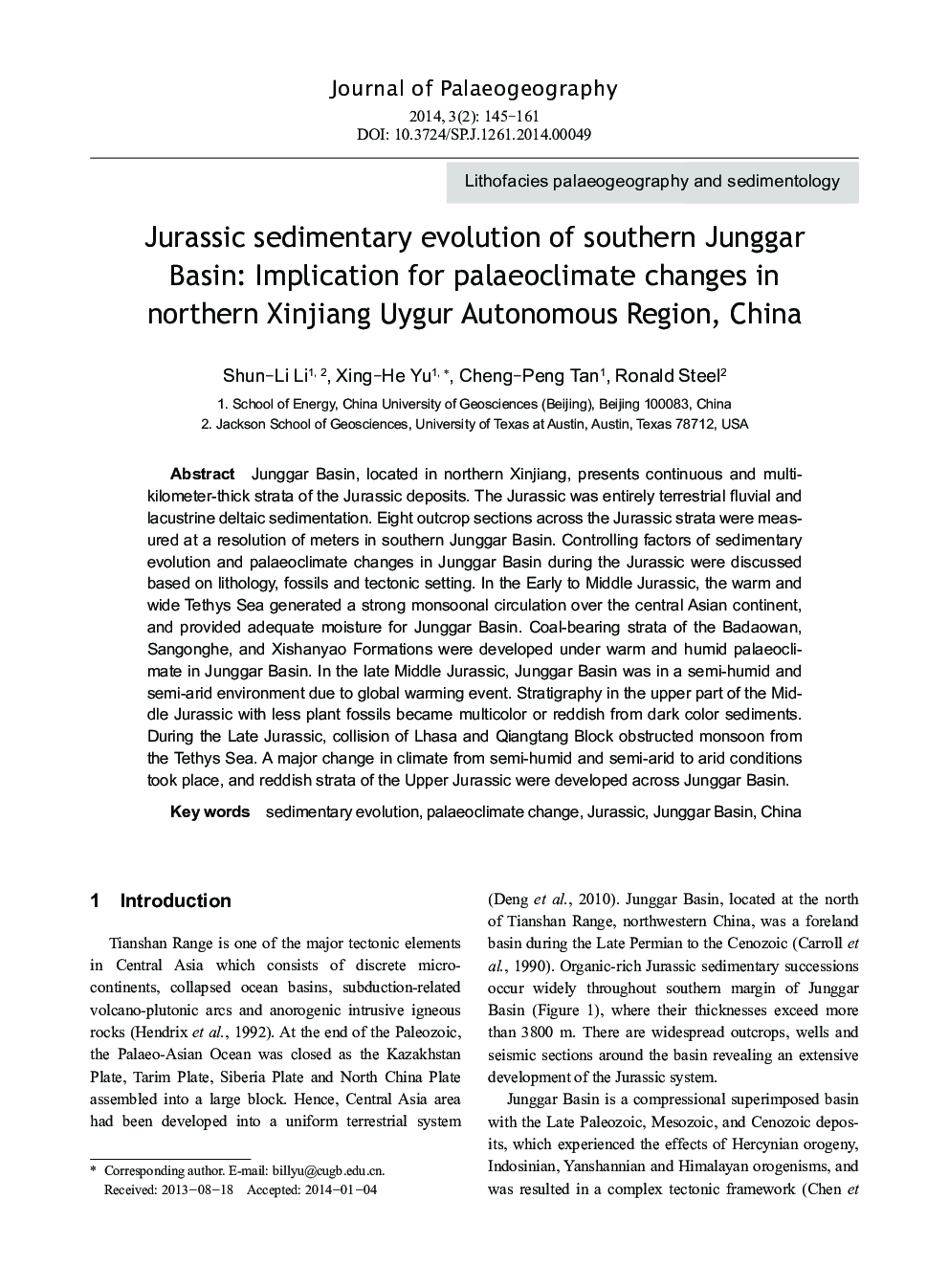| Article ID | Journal | Published Year | Pages | File Type |
|---|---|---|---|---|
| 4581051 | Journal of Palaeogeography | 2014 | 17 Pages |
Junggar Basin, located in northern Xinjiang, presents continuous and multikilometer-thick strata of the Jurassic deposits. The Jurassic was entirely terrestrial fluvial and lacustrine deltaic sedimentation. Eight outcrop sections across the Jurassic strata were measured at a resolution of meters in southern Junggar Basin. Controlling factors of sedimentary evolution and palaeoclimate changes in Junggar Basin during the Jurassic were discussed based on lithology, fossils and tectonic setting. In the Early to Middle Jurassic, the warm and wide Tethys Sea generated a strong monsoonal circulation over the central Asian continent, and provided adequate moisture for Junggar Basin. Coal-bearing strata of the Badaowan, Sangonghe, and Xishanyao Formations were developed under warm and humid palaeoclimate in Junggar Basin. In the late Middle Jurassic, Junggar Basin was in a semi-humid and semi-arid environment due to global warming event. Stratigraphy in the upper part of the Middle Jurassic with less plant fossils became multicolor or reddish from dark color sediments. During the Late Jurassic, collision of Lhasa and Qiangtang Block obstructed monsoon from the Tethys Sea. A major change in climate from semi-humid and semi-arid to arid conditions took place, and reddish strata of the Upper Jurassic were developed across Junggar Basin.
